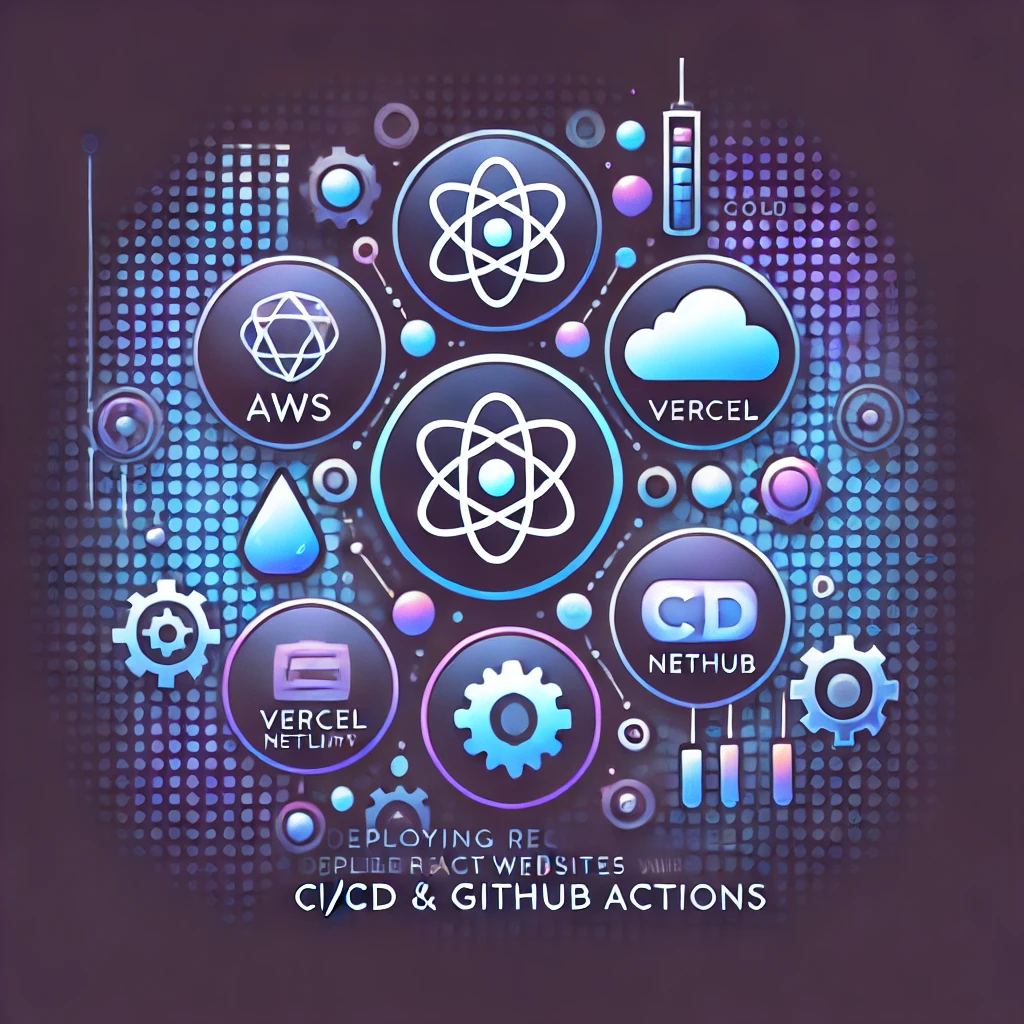How to Deploy a React Website Using GitHub Actions on Various CI/CD Platforms
 Bharat Veer Yadav
Bharat Veer YadavTable of contents
- 1. 🔧 Introduction to CI/CD and GitHub Actions
- 2. 🚢 Deploying on GitHub Pages
- 3. 🌱 Deploying on Netlify
- 4. ⚡ Deploying on Vercel
- 5. ☁️ Deploying on AWS S3 & CloudFront
- 6. 🔥 Deploying on Firebase Hosting
- 7. 🌀 Deploying on Heroku
- 8. 🐳 Deploying on DigitalOcean with Docker
- 9. 🏗️ Custom CI/CD Pipelines: Building from Scratch
- 10. 🔑 Final Thoughts and Best Practices

In this blog series, we’ll dive into the fascinating world of deploying React websites across different platforms using CI/CD pipelines, focusing on GitHub Actions. Whether you’re a beginner or an experienced developer, this guide will walk you through various deployment strategies, helping you automate the process and save time. Let’s explore the power of continuous integration and delivery! 🌐
1. 🔧 Introduction to CI/CD and GitHub Actions
We'll start with a brief overview of CI/CD and GitHub Actions. Continuous Integration (CI) ensures that code changes are automatically tested and integrated into your main branch, while Continuous Deployment (CD) pushes these changes into production. GitHub Actions is a powerful automation tool that allows you to run workflows directly from your repository, making it ideal for automating deployments.
2. 🚢 Deploying on GitHub Pages
GitHub Pages is one of the easiest and most popular ways to deploy React websites. We’ll guide you through creating a simple GitHub Action workflow that automates deployment to GitHub Pages with each push to the main branch. We’ll explore how to:
Set up your repository for deployment 🛠️
Configure the
gh-pagesbranch for deployment 📂Automate the build and deploy steps using GitHub Actions 🤖
3. 🌱 Deploying on Netlify
Netlify offers an intuitive platform with powerful CI/CD features. In this section, we’ll look at how to:
Link your GitHub repository with Netlify 🔗
Configure a GitHub Action to trigger Netlify’s deployment hooks 🔄
Use environment variables and advanced Netlify features 🧩
4. ⚡ Deploying on Vercel
Vercel, known for its ease of use and quick setup, makes deploying React apps seamless. We’ll cover:
Setting up your project on Vercel 💻
Automating deployments with GitHub Actions and Vercel’s Git integration 🔄
Optimizing build performance and adding custom domains 🌍
5. ☁️ Deploying on AWS S3 & CloudFront
Amazon S3 and CloudFront offer powerful hosting solutions for static React websites. This section will take you through:
Setting up an S3 bucket to host your website 🛖
Using CloudFront for content delivery 🚀
Automating the deployment using GitHub Actions, including building the app and uploading files to S3 📦
6. 🔥 Deploying on Firebase Hosting
Firebase Hosting is another great platform that integrates well with React apps. Here, we’ll explore:
Configuring Firebase CLI for your project 🔧
Writing GitHub Actions workflows to build and deploy your app to Firebase 🚀
Setting up custom domains and SSL certificates 🔐
7. 🌀 Deploying on Heroku
For full-stack React applications, Heroku is a solid choice. We’ll look at how to:
Deploy a React app connected to an Express backend 🌐
Automate the build and deployment process using Heroku’s GitHub integration 🤖
Use GitHub Actions to streamline the CI/CD pipeline ⚙️
8. 🐳 Deploying on DigitalOcean with Docker
If you’re comfortable with Docker and want more control, DigitalOcean is a powerful alternative. This section will cover:
Setting up a Droplet (VPS) for hosting 🖥️
Creating a Docker container for your React app 🐋
Automating deployment using GitHub Actions to build and push the Docker image 📦
9. 🏗️ Custom CI/CD Pipelines: Building from Scratch
Want to go beyond GitHub Actions? In this section, we’ll explore custom CI/CD pipelines using Jenkins, CircleCI, and GitLab CI. You’ll learn:
How to set up Jenkins on your own server 🛠️
Use CircleCI and GitLab CI for deploying React apps ⚙️
Comparing different tools and best practices for creating efficient pipelines ✅
10. 🔑 Final Thoughts and Best Practices
We’ll wrap up by discussing key takeaways, best practices for maintaining efficient CI/CD pipelines, and optimizing performance. By the end of this series, you’ll have a comprehensive understanding of how to deploy React apps across various platforms using CI/CD with GitHub Actions. 💡
Subscribe to my newsletter
Read articles from Bharat Veer Yadav directly inside your inbox. Subscribe to the newsletter, and don't miss out.
Written by
